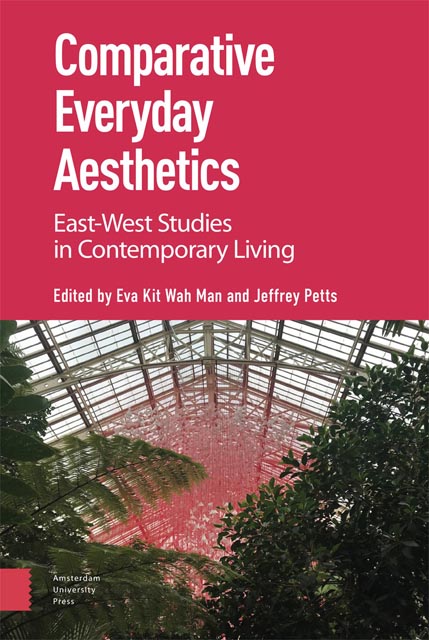Book contents
- Frontmatter
- Contents
- Living with Everyday Objects: Aesthetic and Ethical Practice
- Comparative Everyday Aesthetics: An Introduction
- Part 1 Living Aesthetically
- Part 2 Nature and Environment
- Part 3 Eating and Drinking
- Part 4 Creative Life
- Part 5 Technology and Images
- Part 6 Relationships and Communities
- Index
7 - Chopsticks and the Haptic Aesthetics of Eating
Published online by Cambridge University Press: 18 October 2023
- Frontmatter
- Contents
- Living with Everyday Objects: Aesthetic and Ethical Practice
- Comparative Everyday Aesthetics: An Introduction
- Part 1 Living Aesthetically
- Part 2 Nature and Environment
- Part 3 Eating and Drinking
- Part 4 Creative Life
- Part 5 Technology and Images
- Part 6 Relationships and Communities
- Index
Summary
Abstract
This essay explores the topic of chopsticks to illustrate the haptic aesthetics of eating as a form of everyday aesthetics. After analyzing the art of eating, conceived in the stricter sense of styles of ingesting food, this chapter explores this art as a form of aesthetic and social performance in everyday life. It does so through the prism of chopsticks, noting in particular their relationship to haptic, proprioceptive, and other somaesthetic pleasures. Examining factors in the history of chopsticks in East Asian cultures, the essay highlights differences in the styles of chopsticks and their use in the food cultures of China, Japan, and Korea.
Keywords: chopsticks, eating, haptic aesthetics, somaesthetics, China, Japan, Korea
The activities of eating and drinking are manifestly present in every culture, in every age, and among all the different classes of society. Life would be impossible without such acts and their regular daily performance. Apart from occasional days of total fasting (such as the Jewish Yom Kippur), the everyday activities of eating and drinking are performed every day and most typically more than once a day. Not only a necessity of life-sustaining nourishment, they are a source of life-enriching pleasures and entertainment, and they have long been cultivated as such through the arts of cuisine, winemaking, and brewing, but also through the various decorative artistry of serving vessels and utensils with which we eat and drink. However, the dominant Western philosophical tradition has long excluded these arts and pleasures from the domain of aesthetics and the realm of beauty.
We see this already in Plato. In Greater Hippias 298e–299a, he limits beauty (τὸ καƛόν) to what is perceived through the senses of sight and hearing. He explicitly excludes the perceptual pleasures of “food and drinks” (as well as “making love”) from being beautiful because they depend on other senses, namely taste, smell, and touch. The privileging of the distant senses of sight and hearing over the more proximal senses of taste, touch, and smell remains central to the powerful idealist tradition of philosophical aesthetics and rests on the assumption that sight and hearing are both cognitively and spiritually superior because they are less bodily in that their objects are more remote from the body. Complementing this ancient argument against eating as an activity with aesthetic potential is a further argument from perhaps the most influential modern theory of aesthetics, that of Immanuel Kant.
- Type
- Chapter
- Information
- Comparative Everyday AestheticsEast-West Studies in Contemporary Living, pp. 139 - 152Publisher: Amsterdam University PressPrint publication year: 2023



